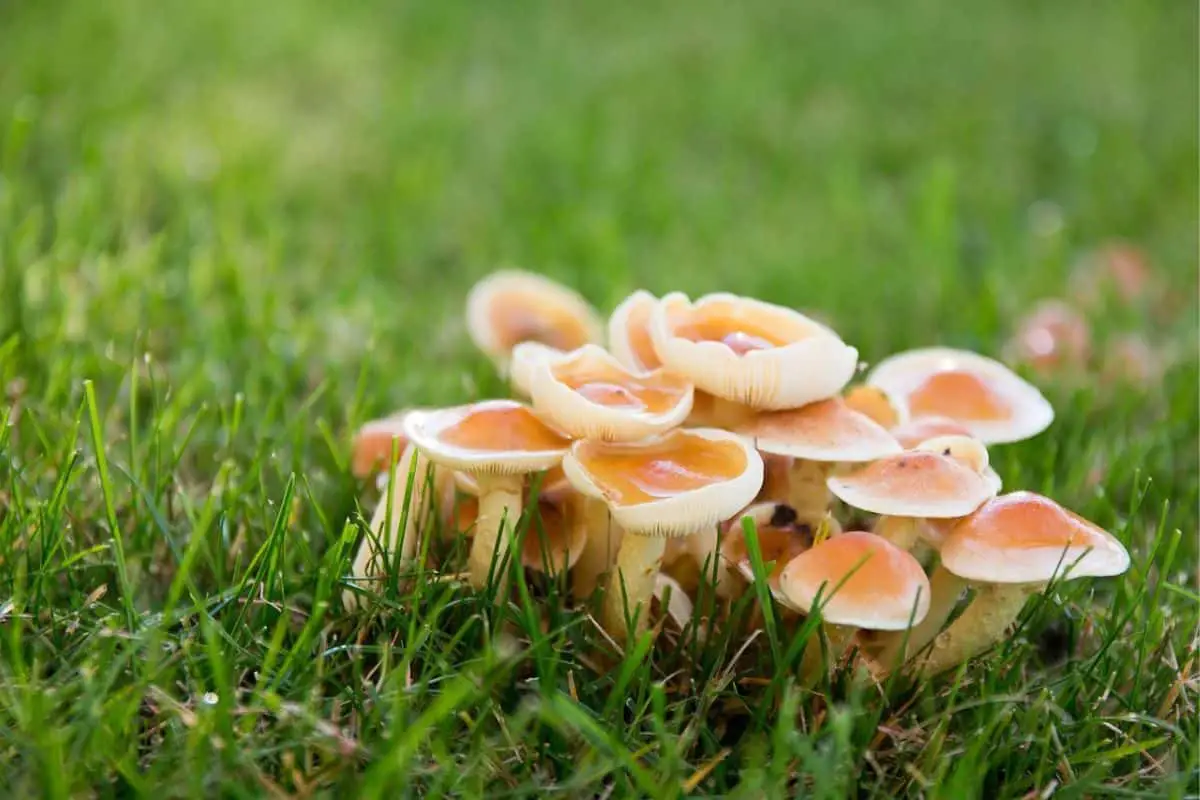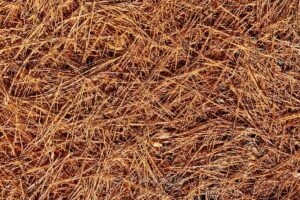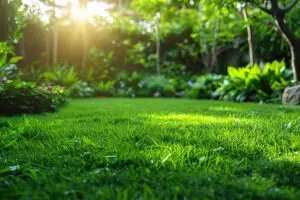This page may contain affiliate links. If you click and buy, we might get a small commission at no cost to you.
Not all mushrooms are created equally, and the ones growing in your yard are not as desirable as the ones you order on your pizza. So, it’s only natural to want to get rid of fungi popping up in your lawn. But how can you kill mushrooms without killing grass?
White vinegar and baking soda are two natural and non-toxic options that can aid in getting rid of those mushrooms without damaging the lawn. If you want to keep them from coming back, however, you will need to implement preventive measures.
How to kill mushrooms without killing grass – 2 best ways
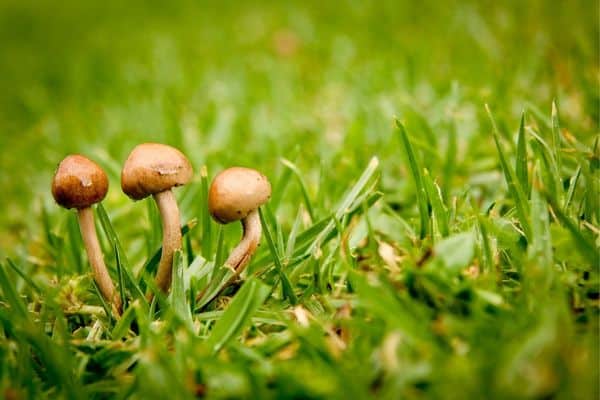
You don’t have to kill the grass in order to kill mushrooms. There are a couple of safe, non-toxic, and budget-friendly options that can help kill mushrooms while maintaining the appearance of your lawn.
1. White Vinegar

Combine 1 part horticultural vinegar with 4 parts lukewarm water, making sure to mix well. Spray the solution over and around the mushrooms, making sure to thoroughly coat them in the mixture.
Vinegar contains acetic acid, which won’t kill grass or harm humans, but works as an effective mushroom control. Make sure, however, that you use horticultural vinegar and not regular distilled vinegar. Horticultural vinegar has a higher strength than the vinegar you find in the grocery store.
2. Baking Soda
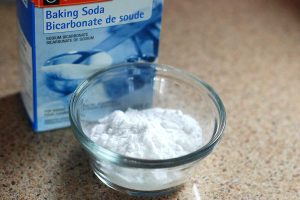
Baking soda is a safe way to kill mushrooms without killing your lawn. Dissolve 2 teaspoons of baking soda in 1 gallon of room temperature water, and stir until mixed well.
Pour the mixture directly over and around the mushrooms. Baking soda increases the soil’s pH level, making it more alkaline, which mushrooms are not a big fan of. The mushrooms should be gone within 3 days.
Can I use fungicides to kill mushrooms in my yard?
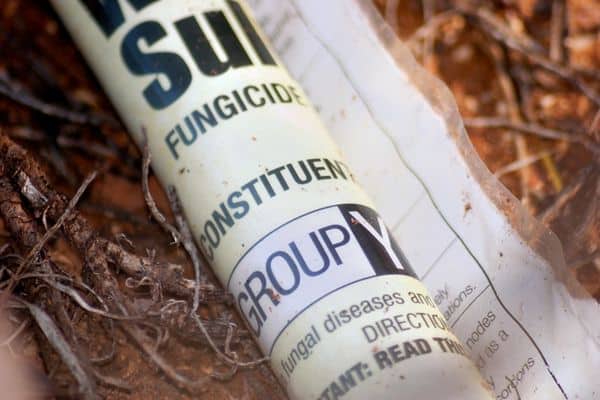
Most fungicides available to consumers are not effective at getting rid of mushrooms growing on your lawn. These types of fungicides are designed to treat fungal diseases, such as powdery mild, rust, dollar spot, and anthracnose.
Fungicides containing the active ingredient Azoxystrobin can help control mushrooms. However, these types of fungicides are typically only available to professionals and are used in large outbreaks. Most people find that homemade options paired with preventive measures work well for their needs.
Can I mow over the mushrooms?
Never mow over the mushrooms as this does nothing but release more of their spores into the air and your lawn. Mowing over the mushrooms is one of the quickest ways to ensure mushrooms continue to grow throughout your lawn.
What you can do, however, is manually pull the mushroom from the base before mowing. In fact, manually removing the fungi can help to prevent them from spreading further.
Make sure to place the mushrooms in a plastic bag and tightly seal the bag closed. Don’t toss the mushrooms on the ground or place them in a compost pile, as this can cause the mushrooms to spread.
Why are mushrooms growing in my yard?

Knowing why mushrooms are growing in your yard in the first place goes a long way to help fight against these fungi. Mushrooms are a natural part of soil composition and help to decompose organic matter.
While underground, they do their thing, helping to enrich the soil, with us being none the wiser. It doesn’t necessarily mean something is wrong when they start appearing above ground, and it could just be the result of fallen leaves or decaying wood landing in your yard.
Mushroom spores carried by the wind, insects, and even birds could also cause them to appear in your grass. Excessive moisture is another reason why mushrooms start growing in your yard, as well as too much shade.
What are fairy rings?
It is not uncommon for mushrooms to appear in your yard in a ring formation. These formations are called fairy rings, and are naturally occurring rings of mushrooms most often found in forests, but can appear in other areas, including residential lawns.
These rings occur when a mushroom’s mycelium (similar to a root structure) lands in an ideal growing spot where they can grow and send out their thread-like roots. These roots then grow out from all directions, evenly forming a circular-shaped mat under the ground. The mushrooms then grow from this mat in a similar shape above ground.
Fairy rings are found in a wide array of folklore from various parts of the world, and their actual legends vary widely from one area to the next. For example, German tradition associates fairy rings with witches, and they are said to be hazardous or dangerous.
Welsh folklore, however, sees them as a positive sign, stating that mountain sheep who consume the grass inside fairy rings will flourish, and crops planted in an area with fairy rings will provide a bountiful harvest.
How can I prevent mushrooms from growing in my yard?
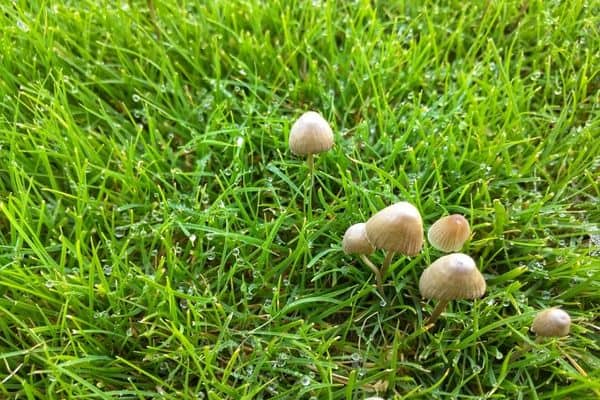
The best defense against mushrooms reappearing in your yard is to take the necessary steps to prevent them from growing.
1. Clean Up
Mushrooms feed on decaying organic matter, and eliminating their food source helps prevent them from returning. Regularly remove leaves, grass clippings, and sticks from your yard to help curb mushroom growth.
2. Control Moisture
Damp, shaded areas are the ideal location for mushrooms, and if your lawn is a soggy one, you could see an abundance of fungi popping up. You can help prevent this by addressing the moisture issue your lawn has.
This could be reducing the amount of watering you provide for your lawn, adding french drains or gutters to direct the water away from an area, or improving soil composition so that it drains properly. No matter the cause, reducing moisture is necessary to keep mushrooms at bay.
3. Provide Aeration
This preventive measure sometimes goes hand in hand with moisture control, since poor soil drainage is a common cause of soggy lawns. You can aerate your lawn by renting an aeration machine or purchasing an aeration tool.
These tools pull soil plugs out of your lawn to help introduce air into the ground and reduce soil compaction, all of which aid in soil drainage and aeration.
4. Add Fertilizer
Adding a nitrogen-based fertilizer helps to speed up the decaying process of organic material, which is the mushroom’s food source. So the fertilizer won’t kill the mushrooms, but it will help keep them from regrowing.
Use 1 pound of nitrogen fertilizer for every 1,000 square feet of lawn. Make sure to follow the application instructions found on the back of the fertilizer packaging.
Is it dangerous to have mushrooms growing on my lawn?
Seeing mushrooms in your lawn shows there is a healthy ecosystem occurring, but they can pose a threat since some varieties are toxic to people and pets.
With that said, however, there are thousands of mushroom species and only about 100 species can cause symptoms when consumed by humans. Furthermore, only about 15 to 20 species of mushrooms are potentially deadly when ingested.
If you have children or pets, it is better to play it safe and treat all mushrooms as potentially harmful and remove them as soon as possible.
